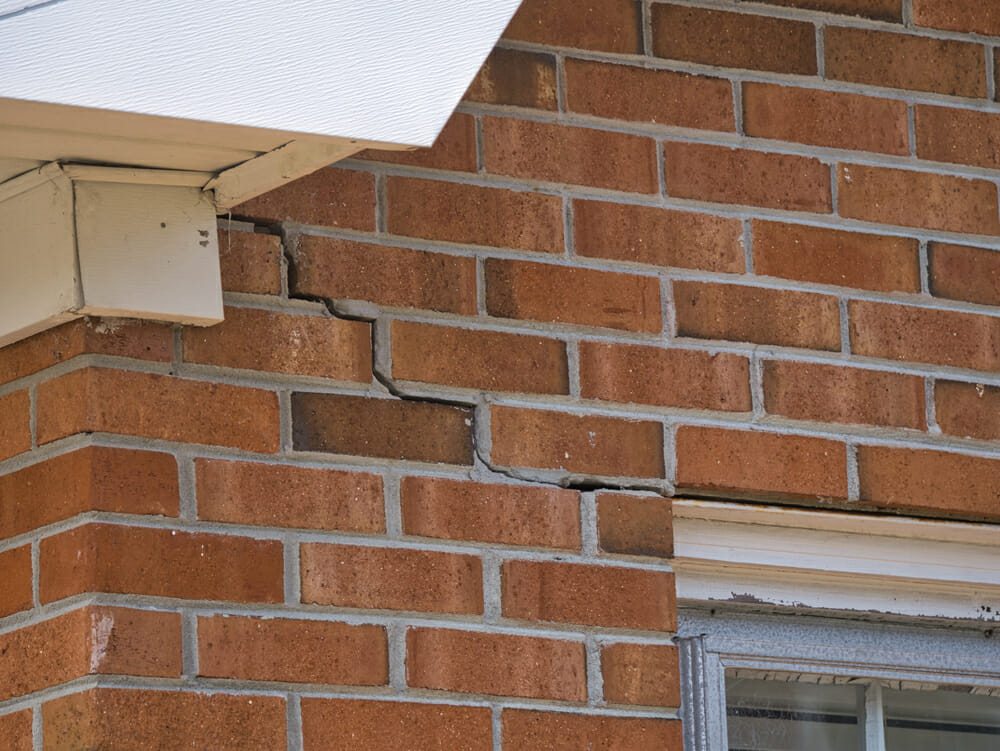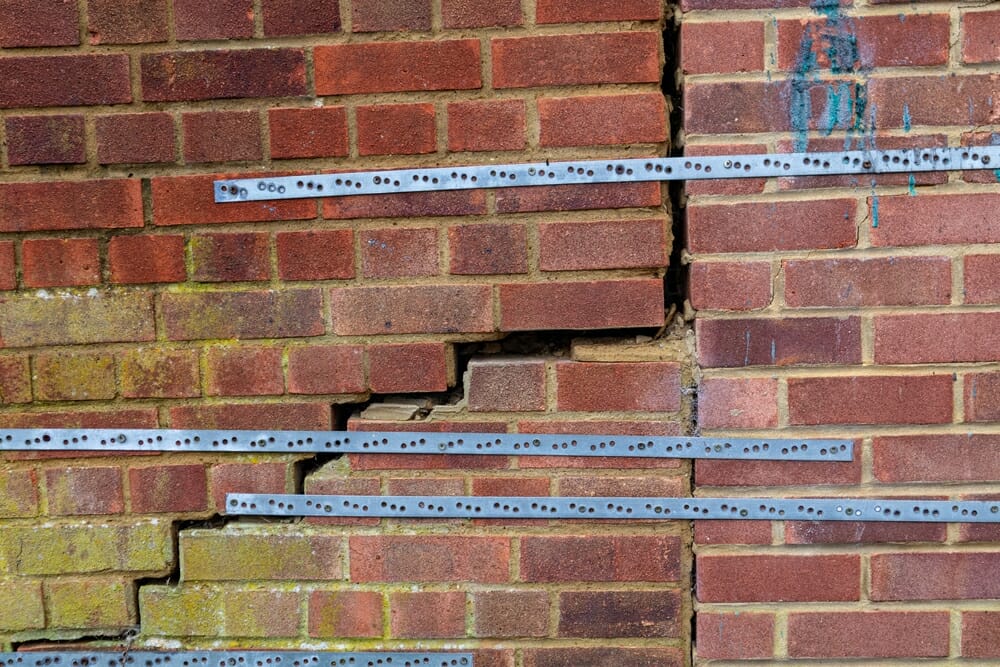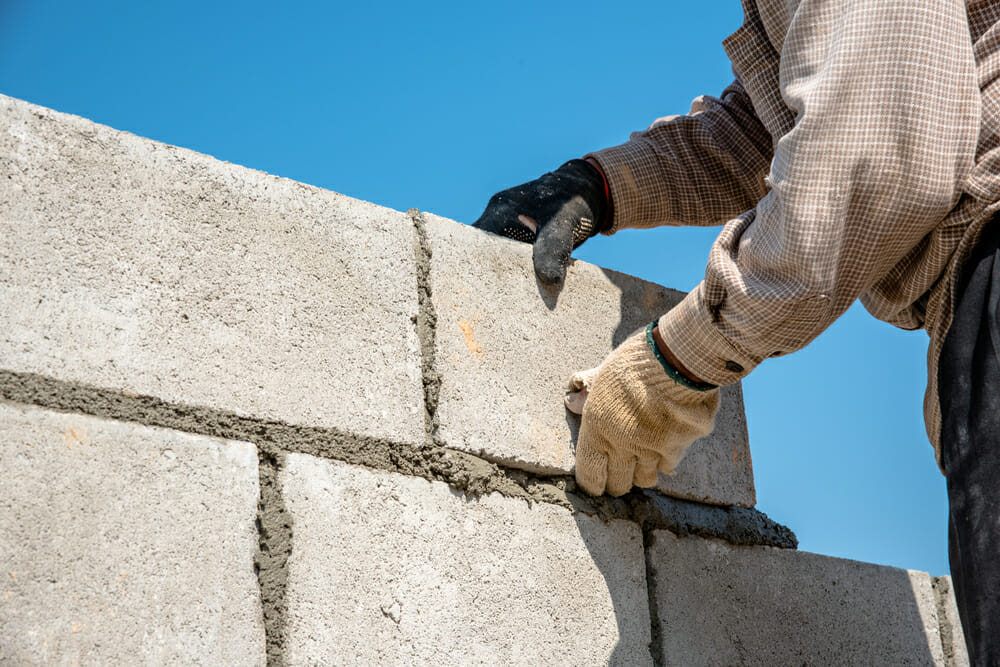Brick masonry has long been prized as an attractive and durable building material; though over time it may deteriorate, necessitating repairs. If you own a masonry building, whether it be a home, business, or commercial space, being aware of common masonry damages & repairs-as well as when to call in professional help-is vital.
Routinely spend some time walking around your building looking up and down for crumbling brick, cracks, water stains, and any obvious signs of damage. If you do notice any signs of damage such as these, you’ll want to call in a professional masonry contractor to perform some routine repairs.
At Rife Masonry, our expert masons have decades of experience with all forms of masonry repair services for homeowners. No matter if you have cracked bricks, damaged mortar, loose stone, or flashing issues, we can deliver lasting repairs for optimal structural integrity. Now, let’s dive into 5 common masonry repairs – what they are, what to look for, and how they can be fixed.
1) Masonry Cracks
Vertical cracks often appear as the result of foundation settlement or building movement, although small vertical cracks should not cause immediate alarm; just keep an eye out and take necessary measures if they worsen or expand further. Horizontal cracks on the other hand often suggest issues which need urgent professional assessment and attention from a qualified mason.
Cracked masonry walls require various approaches for repair. While smaller and hairline cracks might only require patching with mortar or caulking, larger or more severe fractures could require extensive repairs such as tuckpointing, rebuilding sections of the wall or even total reconstruction of portions of it.
For effective masonry crack repairs, professional help should always be sought from experienced masonry contractors. They will evaluate any cracks present and develop the appropriate long-term strategy – this may involve filling cracks with mortar, replacing damaged bricks with new ones or reinforcing affected areas with steel reinforcements.

2) Brick Spalling
Many masonry structures experience brick spalling due to water damage or freeze-thaw cycles, leading to their bricks crumbling away, chipping, or entire pieces dissolving away completely.
One of the primary factors leading to brick spalling is water infiltration. As liquid seeps into bricks, it weakens their structure over time and leads to further degradation. Freeze-thaw cycles exacerbate this issue: liquid enters bricks during cold weather, freezes up then expands and creates pressure, which causes cracking and spalling of the walls.
Poor quality mortar, the glue that holds bricks together, can also lead to brick spalling. Weak or deteriorating mortar may loosen or separate bricks from each other over time and lead to spalling as a result.
Addressing brick spalling begins by identifying its cause. Water infiltration requires fixing or improving the drainage system to stop further damage from taking place; damaged mortar joints need repair, while replacing worn out bricks may need replacement as part of fixing brick spalling issues. If any signs of brick spalling appear within your masonry structure, consult a professional for a full assessment of damage.
3) Damaged Mortar Joints
Deteriorated mortar joints are another significant threat to masonry structures, compromising their structural stability and weakening them over time due to exposure to weather elements or water damage. Damaged joints compromise stability of all involved masonry elements, in turn weakening overall structure stability.
Water infiltration is one of the main contributors to damaged mortar joints. When water seeps into mortar joints, it breaks down bonds, leading to crumbling or deterioration. Damaged joints may result in gaps or cracks between bricks or stones and compromise aesthetics as well as reduced structural integrity – thus weakening both aesthetics and integrity of structures.
Locating damaged mortar joints can be relatively straightforward: gaps, cracks or crumbling mortar between bricks or stones should give an indicator. Missing mortar may even signal that repair or replacement may be needed. Professional masons know exactly how to repoint or caulk damaged joints so as to match both color and texture seamlessly with existing mortar surfaces.

4) Chimney Repair and Rebuild
Over time, chimneys take a beating from weather conditions and heat generated by fireplaces. A few signs that your chimney might need repairs or rebuilding include leaning or tilting, loose or missing bricks, cracks, water leakage or even an unsightly chimney cap that needs to be repaired – these could indicate structural problems, water damage or foundation issues with its foundation.
Chimney repairs typically involve replacing damaged bricks, repointing or tuckpointing damaged mortar joints, installing new chimney caps or crowns, and waterproofing the chimney to stop water infiltration. In severe cases of chimney damage, complete reconstruction may be necessary to ensure structural integrity.
Always consult a professional when undertaking repairs and rebuilds on masonry chimneys. Professional masonry repair specialists possess the requisite knowledge, experience, and knowhow required for an accurate diagnosis and solution of your chimney issue – assuring the long-term durability and safety of its construction.
5) Sandstone Erosion

Sandstone erosion can have severe implications on masonry structures constructed of sandstone as building material. Water infiltrates through its porous surface to slowly wear away its structure, causing irreparable damage that results in discoloration, weathering, and possible structural collapse of these buildings over time.
Preventing sandstone erosion requires regular care and maintenance, such as sealing the stone against water infiltration and avoiding chemicals that accelerate erosion. To extend the longevity and aesthetics of your masonry structure, address any signs of erosion immediately by seeking professional assessment and repair services like filling gaps and cracks, surface sealing or replacing damaged stones to stop erosion and preserve structural integrity.
Contact Rife Masonry for Masonry Repairs in Seattle
Looking for professional masonry repairs near Seattle? Look no further than Rife Masonry! We offer comprehensive masonry repairs services, including crack repair, tuckpointing, caulking waterproofing and more. Reach out now for a complimentary consultation let our masons handle all your repair needs!

